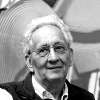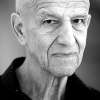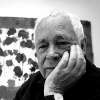Abstract
Discover art for sale. Buy and sell Abstract prints & editions online. Abstract Art is an all-encompassing term to describe works largely concerned with form and the nature of painting itself.
Art for sale
Movement Overview
Used as an adjective, the term ‘abstract’ attempts to describe something that does not lend itself to simple definition. When used to refer to art, the term ‘abstract’ brings all manner of media, subjects, and styles to mind; whether it be the expressive and dramatic works of English romantic painter J.M.W. Turner, the semi-abstract ‘blur’ and photo-paintings of seminal German artist Gerhard Richter, or the bold brush strokes of British artist Howard Hodgkin, abstraction has left an indelible mark on more than 300 years of art history.
Despite its strong associations with Modern & Contemporary Art movements, such as Impressionism and Abstract Expressionism, many argue that abstraction – and its namesake, abstract art – has been around since as early as the 18th century.
For example, some have identified the expressive works of English Romantic painter J. M. W. Turner as ‘abstract’. One of his most famous paintings, Sun Setting Over A Lake (1840), renders Switzerland’s Lake Lucerne almost indistinguishable; covering its natural features with a thick layer of solar glare, some have argued it identifies abstraction as a feature of the natural world.
Later, in 1874, a group of French artists decided to build abstraction into the very fabric of their artistic process. Defying the upright approaches of the Paris Salon, the Impressionists - as they became known - counted as well-known figures as Auguste Renoir, Claude Monet, and Edgar Degas in their number, and are widely credited (in the Western canon) with birthing the first truly ‘modern’ art form. Impressionism’s disregard for convention inspired the non-traditional practices of Cubism, created by Pablo Picasso, abstract art pioneers Frank Stella and Howard Hodgkin, and the Abstract Expressionism movement.
Abstract art is a large and varied genre, but often encapsulates artworks that are based on an object, such as a landscape or a figure, but which have deconstructed, schematised, and radically simplified their form.
Abstract art can also refer to works that concern themselves with ‘form’ in its purest sense; that is to say, the depiction of ‘things’ that have no basis in what we can see in an external reality. This kind of art employs a variety of mark-making techniques alongside geometric shapes, an approach that came to define influential sub-movements like ‘Concrete Art’, first formulated in 1930 by Dutch artist and leading proponent of the ‘de Stijl’ or ‘Neoplasticist’ movement, Theo van Doesburg.
By the 1940s and 50s, so-called Abstract Expressionism became a hugely influential force in the Modern art world. Pioneered by painters such as Jackson Pollock, Mark Rothko, and Willem de Kooning, Abstract Expressionism placed great emphasis on spontaneous gesture. The lasting legacy of the movement can be seen in art produced as recently as the 2010s; a particularly strong example of its influence is the Abstrakte Bilder (or ‘abstract pictures’) series by German artist Gerhard Richter, which began in the mid-1980s.
Some of the most famous Abstract artists include Howard Hodgkin, Gerhard Richter, Frank Stella, Jackson Pollock, Mark Rothko, and Kazimir Malevich.
Turner Prize-winning artist Howard Hodgkin’s work is well-known for both its non-representational qualities and sustained use of vivid colour – a product of the artist’s longstanding obsession with the art of India, a country he visited many times throughout his life.
In 1995, Hodgkin painted the Venetian Views series, which depicts the same view of Venice at four different times of day, and in four different light conditions. The works — entitled Venice, Morning; Venice, Afternoon; Venice, Evening; and Venice, Night — foreground the artist’s obsession with the depiction of his own perception of light and colour, as opposed to a more objective representation of visualised reality.
Commenting on the media’s apparent obsession with the meaning behind his work, Hodgkin once remarked, ‘it should speak for itself. And mostly, it does. I just paint pictures of emotional situations, all of the colours and shapes I use have some sort of meaning for me.’
The scope of Abstract art is so far-reaching that each of its proponents maintains a particularly distinctive style, using a variety of artistic techniques to produce works.
The likes of Jackson Pollock and Gerhard Richter are united by their shared use of gesture and spontaneous movement as dynamic means of image-making. Richter’s Cage Grid (complete set) (2011), an example of one of the artist’s many ‘Abstrakte Bilder’ (or ‘abstract pictures’), for example, was created using squeegees, which were used to drag layers of different coloured paint across the canvas surface. Using a similarly incidental process, Pollock would often create his works by throwing different coloured paints at a surface he laid out on the studio floor.
Despite its possible origins in the 18th century, Abstract Art continues to inspire today.
Following the lead of American Abstract artist Frank Stella, who was inspired by the work of Josef Albers, Hans Hoffman, Barnett Newman and Jasper Johns, British artist Damien Hirst has placed abstraction – and colour – at the heart of his almost philosophical engagement with complex ontological questions, such as that of life and death. Some of Hirst’s early installation pieces, such as A Thousand Years (1990) - which comprises a rotting cow’s head placed a glass box – abstracted objects by taking them out of their usual setting.
Some of the artist’s most famous works are motivated by his simple love of colour, as well as the desire to disrupt art’s capacity for representation. Works such as Methylthymidine (2014) or Mescaline (2014), part of the artist’s well-known Spot paintings, may be named after pharmaceutical or recreational drugs, yet Hirst maintains that they are motivated by a truly ‘abstract’ simplicity.
Commenting on the works, Hirst affirmed, ‘I was always a colourist. I’ve always had a phenomenal love of colour. . . I mean, I just move colour around on its own. So that’s where the Spot paintings came from—to create that structure to do those colours, and do nothing. I suddenly got what I wanted. It was just a way of pinning down the joy of colour.'
The stylistic variance of works falling under the moniker of ‘Abstract’ render the art genre a particularly strong performer on the art market.
Gerhard Richter’s Abstrakte Bilder paintings, made in their majority after 1988, have attracted some of the strongest sale prices for non-representational artworks in recent times. In 2009, one of the artist’s earliest experimentations with his trademark squeegee, named Abstraktes Bild (1979), sold for $136,000. Later in 2011, a group of Richter’s abstract canvases achieved a record price at auction, selling for a total of $20.8 million at Sotheby’s. In the following year, Abstraktes Bild (809-4) (1994), another work from the lengthy series, sold for $34.2 million.
We connect buyers and sellers of original contemporary and modern prints, facilitating discreet, independent, investment led private sales. Fixed, clear and mutually agreed upon between both parties - simple, safe and secure.
MyArtBroker, 55-56 Russell Square, London WC1B 4HP (by appointment only)
875 Washington St, New York, NY 10014, United States (by appointment only)
- © 2025 MyArtBroker. All rights reserved.
- Privacy Policy
- Cookie policy
- Website terms of use
- Terms and conditions






